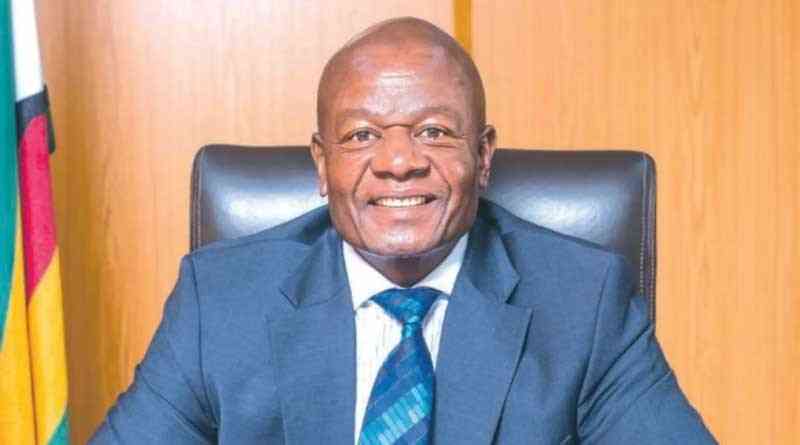
The book of Luke 14: 28 says: “For which of you, desiring to build a tower, does not first sit down and count the cost, whether he has enough to complete it?”. Certainly this verse has a great and deeper meaning towards financial planning.
In Zimbabwe there are many opportunities that are still untapped. However, seeing an opportunity and tackling it without understanding business laws will only leave the entrepreneur with unhealed wounds. One of these business laws is called budgeting.
A good idea is not enough. Businesses aren’t just about ideas; businesses are about execution. Once you have an idea, work on the execution observing the rules and laws pertaining to businesses.
It is not a secret that so many businesses from banks to small enterprises have folded in the past. Most of the time these entrepreneurs blame Inflation and economic woes. But at times it’s because of a liquidity crisis that may be a result of lack of proper financial planning.
What is a budget?It is part of financial planning that concentrates on estimates of income and financial spending for a specific period. This plan allows businesses to forecast on expenditure and the future cash inflows.
It is the roadmap to achieving the set goals and the vision of the business. Without a budget, most businesses experience overspending and underperformance, which could ultimately lead to a liquidity crisis which then leads to company closure.
Budgeting is creating a plan for your money and tracking where it goes. If you do not know where the money you are making as a business is going, then it means that the business can best expect shocks in its journey.
Types of budgets
- Business opinion: Branding in the age of entrepreneurship and industrialisation (Part 22)
- Business opinion: Branding in the age of entrepreneurship and industrialisation (Part 21)
- Business opinion: Branding in the age of entrepreneurship and industrialisation (Part 20)
- Business opinion: Branding in the age of entrepreneurship and industrialisation (Part 19)
Keep Reading
There are 3 major types of budgets: capital budgets, operational budgets and cashflow budgets.
Operating budgets
These concentrate on day-to-day operations (Income generated and the expenditures). Employees’ wages and salaries are included in operating budgets.
Capital expenditure budgets
These are budgets set for major purchases like equipment or properties. They concentrate on huge outlay of finances and involves risk analysis and risk management.
Cashflow budget
Perhaps the most common cash control plan. It looks at the relationship between income and expenses. Specifically, it makes sure that you have enough cash on hand at any time to cover immediate expenditures. This one is a measure normally used to monitor liquidity of the business as a whole.
Basics of budgeting
These are very simple basics that should be considered when doing a budget. They are: 1. Examine your financial statements to see what funds are available.2. Analysis of the business’ income — sales forecasts. 3. The tracking of the business expenses including taxes, compensations, bonuses etc.4. Business environment or financial climate5. Economic pattern. 6. Review budget for approval and distribution.
The business income
It is vital to check on how much income will the business receive and from what sources. Is it a fixed amount per determined period? Which source will bring this income? The entrepreneur can check on any other sources that are short term that could bring extra income eg interests receivable etc. Is the business going to be relying on a job or jobs? What is the minimum income each job will provide after taxes and other withholdings? Never budget on the maximum.
Identification of expenses
No matter how big the income may be if expenses are not known and controlled, a business may face a liquidity crisis. It is important to first look at the fixed expenses of the business — ones which do not change month to month? This includes rentals, salaries, and any other monthly payments. Next is looking at the flexible spending expenses? These include fuel, stationery, marketing costs, leisure activities, etc.
The 50/30/20 rule/budget
This is a financial rule that makes entrepreneurs financially free. The 50/30/20 budget is a formula of budgeting that offers specific income percentage benchmarks for your needs, wants, and savings and debt obligations.
It can also be applied by individuals for personal use. This rule states that when preparing your budget 50% must be allocated to the needs of the business that includes salaries, electricity bills, rentals and so on. Then 30% should be allocated to arisings and wants of the business eg air-tickets for management, holiday packages etc. 20% must be allocated to investments and growth, additional monthly payments towards bank loans etc. This 20% also includes cash cover or an emergency fund.
However, this budgeting method may not work for businesses that are domiciled in cities or countries that have very high cost of living statuses where rentals alone may cost 50% of income or salaries and wages alone are so regulated such that they will take 50% or more of the income. It is also not ideal for businesses that are pursuing debt free status such that they use the aggressive debt repayment method.
The budgeting process
The budgeting process covers all the steps involved in determining and setting a budget, which can include:
Identify the budgetary goals: depending on factors like market dynamics, the economy, sales trends, and current resources, a company has different needs regarding its budget and must strategically plan accordingly.
Look at past data: take advantage of the existing information you have from previous operations for existing businesses. What did you learn about your previous transactions that can be used this time around? Were there any unanticipated diversions from the set budget e.g shortfalls in funding? Were the assumptions you made back then still accurate? And how has the market or industry changed since then? As an entrepreneur or business leader it is important to encourage individual departmental heads to ask themselves these questions.
Get some tangible numbers out: identify your income streams and the exact or expected income. Look at the expenses too. Whether we’re talking about exact numbers or estimates, look for fixed costs (overhead, static costs like rent, mortgage, utilities, salaries and insurance), variable or flexible costs (discretionary fees like software subscriptions, travel costs, and advertising services), and irregular costs (surprise expenses that are difficult to forecast, such as special events and mergers/acquisitions).
Always have cashflow in mind: don’t just look at the amounts; look at the timing as well. Is your consistent revenue enough to take care of seasonal, momentary expenditures? Look at cashflow in terms of the money coming in at a certain point compared to the money going out.
Develop the budget plan
The budget process is a cycle, therefore, it requires constant monitoring. It’s not a one-time consideration, as you will need to check back and update your efforts. Schedule budgetary reviews every quarter so that potential issues are caught in time.
Evaluation: evaluate the performance of the budgeting process in the end and see what can be learned.
Communication: effectively communicate the results of the budget periodically to encourage other stakeholders involved.
Importance of a budget
It controls spending Keeps tabs on financial activities, Helps with project planning: what happens if market conditions change and the business needs to address problems later down the line? Budgeting is the perfect way to prepare financially. Co-ordinates collaboration: since the budget impacts everyone, the budgeting process must involve all departments and teams working together for the wellbeing of the overall company
Motivates stakeholders: top management teams who are aware of budgeting efforts are more likely to understand the goals and initiatives of the business. They are motivated to hold everybody accountable for a stable budget. A sense of financial awareness is created in all the employees; they start understanding how to control their expenses while increasing their income yield.
Measures performance: a budget tends to force the entrepreneur to keep looking at the financial figures and determining whether or not he is meeting his targets. If any cashflow issues arise, he/she will be able to know early. A detailed budget sets realistic goals for all the projects being pursued and ensures proper resource allocation to prevent costly spending overflows. Setting expectations: once a budget sets a spending target for a particular project, then the teams can work with those expectations in mind. They can set their own deadlines and allocate resources according to the company’s master budget. Aligning resource allocation to the goals of the business: think about what part of the company deserves more money this quarter. For instance, if product sales are down this month, it may be wise to allocate more of the budget to sales and marketing. Facilitating collaboration of different departments: departments should not be siloed. Budgeting is the perfect opportunity to connect the finance teams with the rest of the business. For example the minister of finance announces a government budget every year. This sets the tone for all the other government departments. Everyone gets a chance to talk about priorities, expectations, funding and goals, and the finance department gets to share guidance.
My advice
Failure to have a financial plan is planning to fail. I encourage entrepreneurs to have budgets. Never under estimate the importance of a budget. Both new and old businesses cannot run effectively without budgets. For those entrepreneurs who do not have expertise in budgeting, I encourage them to engage experts like this writer to get assistance in the preparation of the much needed plan. When preparing your budget it is important to overestimate your expenses. As well as underestimate your income then you might end up with a surplus.







